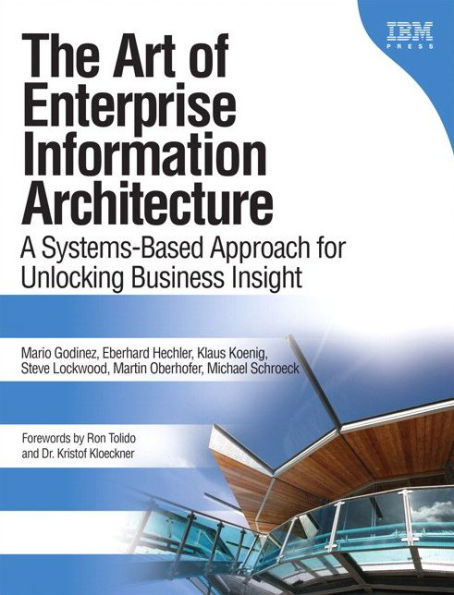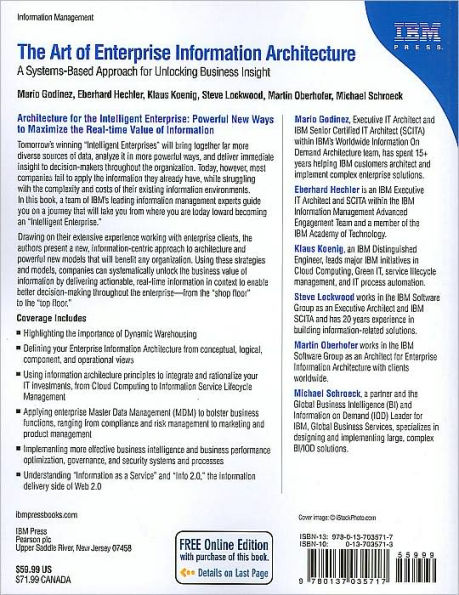5
1
9780137035717


The Art of Enterprise Information Architecture: A Systems-Based Approach for Unlocking Business Insight / Edition 1 available in Paperback, eBook

The Art of Enterprise Information Architecture: A Systems-Based Approach for Unlocking Business Insight / Edition 1
- ISBN-10:
- 0137035713
- ISBN-13:
- 9780137035717
- Pub. Date:
- 04/15/2010
- Publisher:
- Pearson Education
- ISBN-10:
- 0137035713
- ISBN-13:
- 9780137035717
- Pub. Date:
- 04/15/2010
- Publisher:
- Pearson Education

The Art of Enterprise Information Architecture: A Systems-Based Approach for Unlocking Business Insight / Edition 1
$69.99
Current price is , Original price is $69.99. You
$99.99
69.99
Out Of Stock

Product Details
| ISBN-13: | 9780137035717 |
|---|---|
| Publisher: | Pearson Education |
| Publication date: | 04/15/2010 |
| Pages: | 480 |
| Product dimensions: | 7.00(w) x 9.00(h) x 1.10(d) |
About the Author
From the B&N Reads Blog




